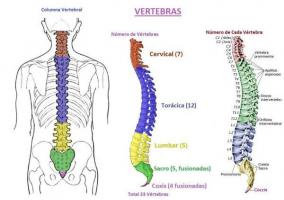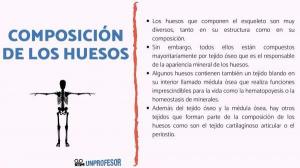What are the BONES of the SPINE
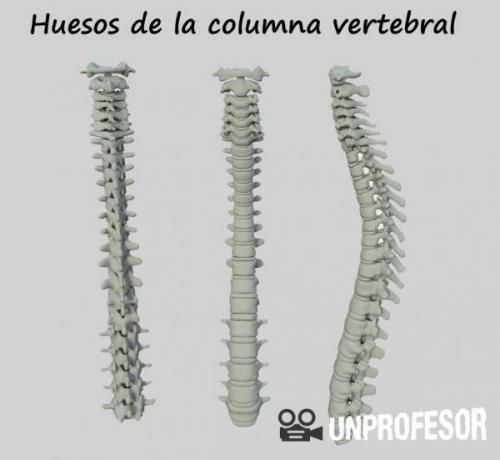
The spine It is an osteofibrocartilaginous system, that is, it is made up of two components: the bony component or bones (vertebrae in this case) and the intervertebral discs (fibrocartilages). Thanks to its composition, the spinal column is an articulated but still resistant structure.
For the articulated structure of the spine to be successful, the bones that compose it (the vertebrae) must have certain properties and characteristics. In this lesson from a TEACHER we will see how spinal bones or vertebrae they have different characteristics and how they work with each other.
Index
- The vertebrae, the bones of the spine
- Typical vertebra in humans
- Variations of the typical vertebra: different types of vertebrae
The vertebrae, the bones of the spine.
Our vertebral column or spinal column is made up of a series of bones that are called vertebrae. During the fetal and growing stages, humans have 33 vertebrae in total but, when going to the adult stage we only have 24
. The remaining vertebrae do not disappear, but the bones that make up the coccyx and the bones that make up the sacrum are fused. In this way, the sacrum and the coccyx go from being two groups of vertebrae to being fused into two complete and continuous bones.Unlike bones in other parts of our body, not all vertebrae are the same. The vertebrae have small modifications or alterations, depending on the function and location within the body. If you want to know more about The parts of the spine, we encourage you to take a look at our lesson.

Image: Natural Sciences
Typical vertebra in humans.
Within the bones of the spine we find the typical vertebra that consists of two major parts, called the vertebral body and the posterior vertebral arch. The vertebral body It is the central part of the vertebra, in the center of it, and is responsible for giving a certain body and consistency to the bone. The part just beside and behind the vertebral foramen is the upper vertebral arch. This arch has a horseshoe shape, on both sides and the massif of the articular processes is fixed, so that two parts are delimited in it.
In addition to these, in the vertebral columns we can find other structures for example:
- Some cartilages called vertebral discs. This tissue is located between one vertebra and the next. The intererrenble discs or cartilages: have the function of absorbing impacts during activities such as walking, running and jumping.
- Each disc has a fibrous cartilage pad or fibrous annulus with a gelatinous center called nucleus pulposus. The nucleus pulposus runs through the center of the spinal column, through a channel formed by the union of the different foramina (foramen magnun) of all vertebrae. This channel is called medullary canal.
- From the ventral arch, we can see that two structures appear: the apophysis and the joints. The joints they are unions between two or more bones. Instead, the apophysis They serve as an anchor or insertion point for the muscles.
Throughout the spinal column we can find a very marked pattern since the vertebrae are aligned with each other by the so-called vertebral bodies and for their articular processes. Between one vertebra and another there are nuclei of loose connective tissue called intervertebral discs (Except for the 5 vertebrae of the sacrum and the 4 of the coccyx, which are fused).
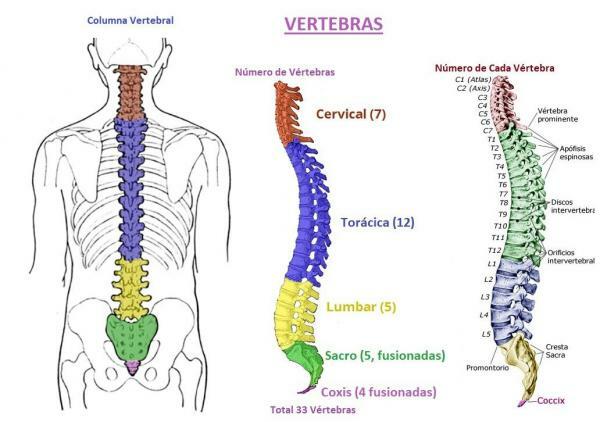
Image: Slideshare
Variations of the typical vertebra: different types of vertebrae.
All variations from the general vertebral pattern occur to meet the needs of different parts of the body. While one part of our back will need to be very flexible, another will need to support a large amount of weight or cushion blows. If you want to know more about this topic you can consult our lesson on The functions of the spine.
In our body there are 4 groups of vertebrae: cervical vertebrae, thoracic vertebrae, lumbar vertebrae, coccygeal vertebrae or coccygeal vertebrae.
- The cervical vertebrae they are bones that are characterized by being small, by having bifid spinous processes (with two projections) and by having a hole in each of the transverse processes.
- On the other hand, in thoracic vertebrae They are characterized by being attached to the ribs, which is why they must have structures attached to these that are called rib elements. Other vertebrae may also have costal elements, but they are smaller and are incorporated in the transverse processes of other regions different from the thorax.
- The main characteristic of lumbar vertebrae is its large size. These bones have to bear a great deal of weight as they mainly support the posterior abdominal wall.
- Finally, the coccygeal vertebrae or the coccyx are very small vertebrae, which stand out from the rest because they are fused together. Between the coccygeal vertebrae there are no intervertebral discs and they cannot articulate and move.
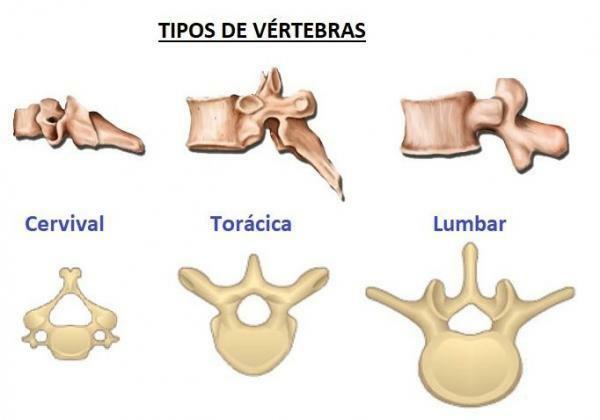
If you want to read more articles similar to The bones of the spine, we recommend that you enter our category of biology.
Bibliography
- Drake, R., Vogl, A. W., & Mitchell, A. W. (2013). Gray basic anatomy. Elsevier Brazil.
- Kapandji, I.A. (2007). Articular Physiology. Volume III. Barcelona: Pan-American.
- Hernández, A. (s.f) The vertebral column. Recovered from http://www.i-natacion.com/articulos/fisiologia/columna.html
- Vertebral Column (s.f) Function of the vertebral column. Recovered from https://columnavertebral.net/funcion-de-la-columna-vertebral/

